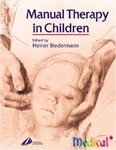Introduction:MTC: reviewing the history
The theoretical base:
Sensori-motor development of newborn and children form the viewpoint of manual
therapy.
Development and Topographical Anatomy of the Cervical Spine
Development of the Central nervous System
Adaptive Properties of Motor Behaviour
Neuromotor Development in Infancy and early Childhood
Clinical insights :
Birthing Interventions and the Newborn Cervical Spine
Birth Trauma and its Implications for the Neuromotor Development
Differential Diagnosis of Central and peripheral Neurological Disorders in
Infants
Manual Medicine from a paediatrician's viewpoint
The influence of the high cervical region on the autonomous regulatory system
in infants
Attention Deficit Syndrome and the upper Cervical Spine
Asymmetry of the posture, locomotion apparatus and dentition in children
The different Levels: Practical Aspects of MTC
Practicalities of MTC: Interaction with parents and children, tricks & tips for
diagnosis and follow-up.
Manual Therapy of the Iliosacral joints and the pelvic girdle in Children
Manual Therapy of the Thoracical Spine in Children
Examination & Treatment of the Cervical Spine in Children:
Radiology in MTC
Functional radiology of the (cervical) spine in children
The how-to of making radiography of newborn and children
Radiological examination of the spine in children and adolescents: Pictorial
essay.
Measuring it: Different Approaches to the Documentation of Posture and Co-
Ordination
Making Sense of it all
Complexity Theory and its implications for Manual Therapy
The Big, the Small, and the Beautiful
The KiSS- Syndrome: symptoms & signs.
A tool for the evaluation and assessment of the effects of manual therapy in
small children
KiDD: KiSS- induced Dysgnosia & Dyspraxia.
How functional vertebrogenic disorders influence the sensori- motor development
of children
The family dimension: How birth trauma and family history complement each other
in facilitating functional vertebrogenic disorders in children.
Epilogue


